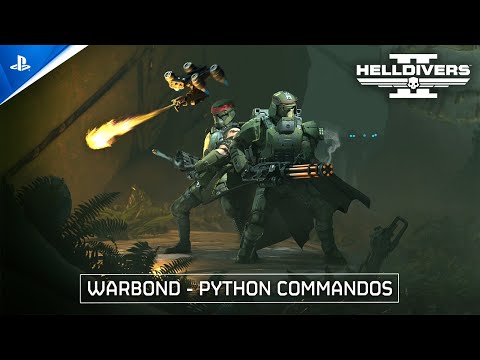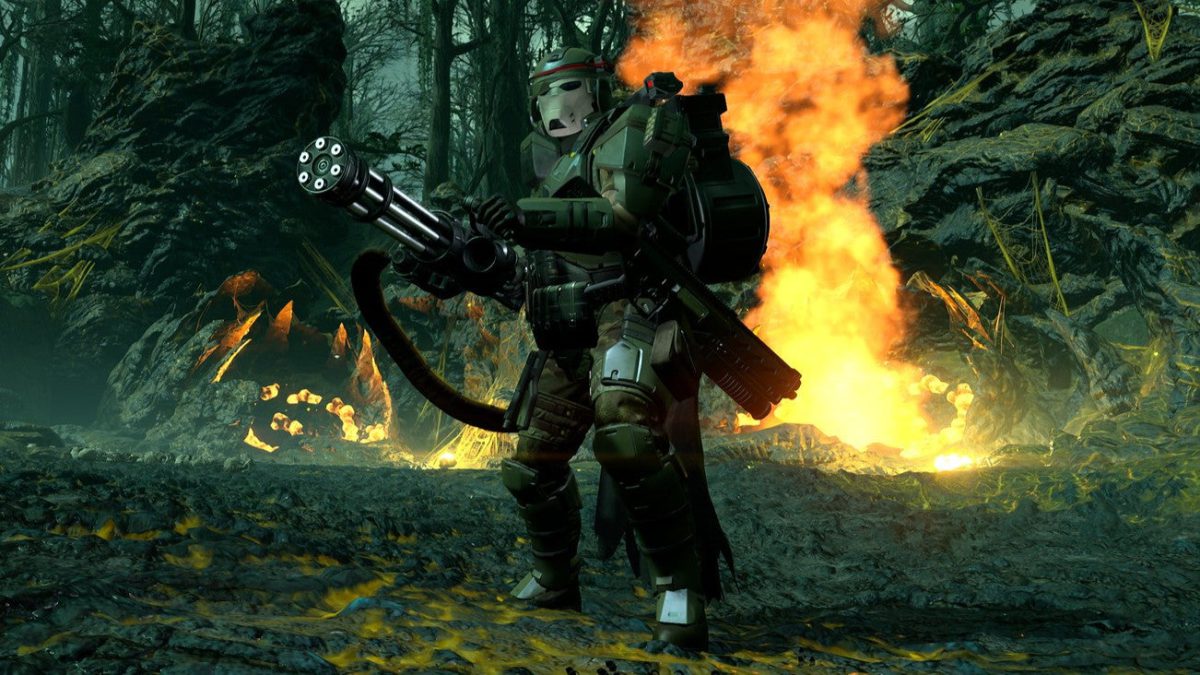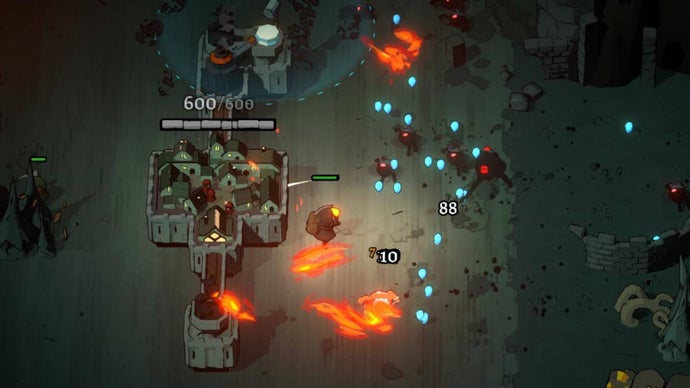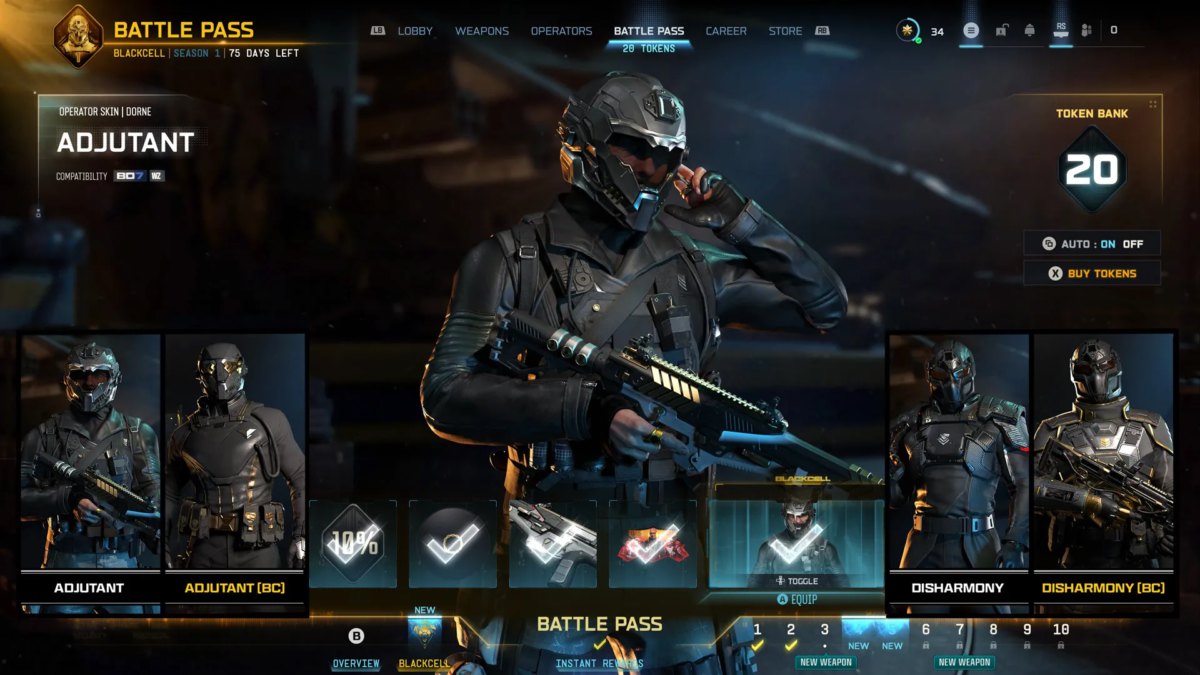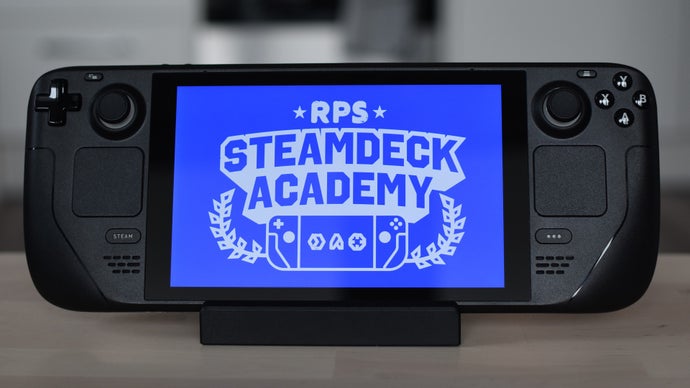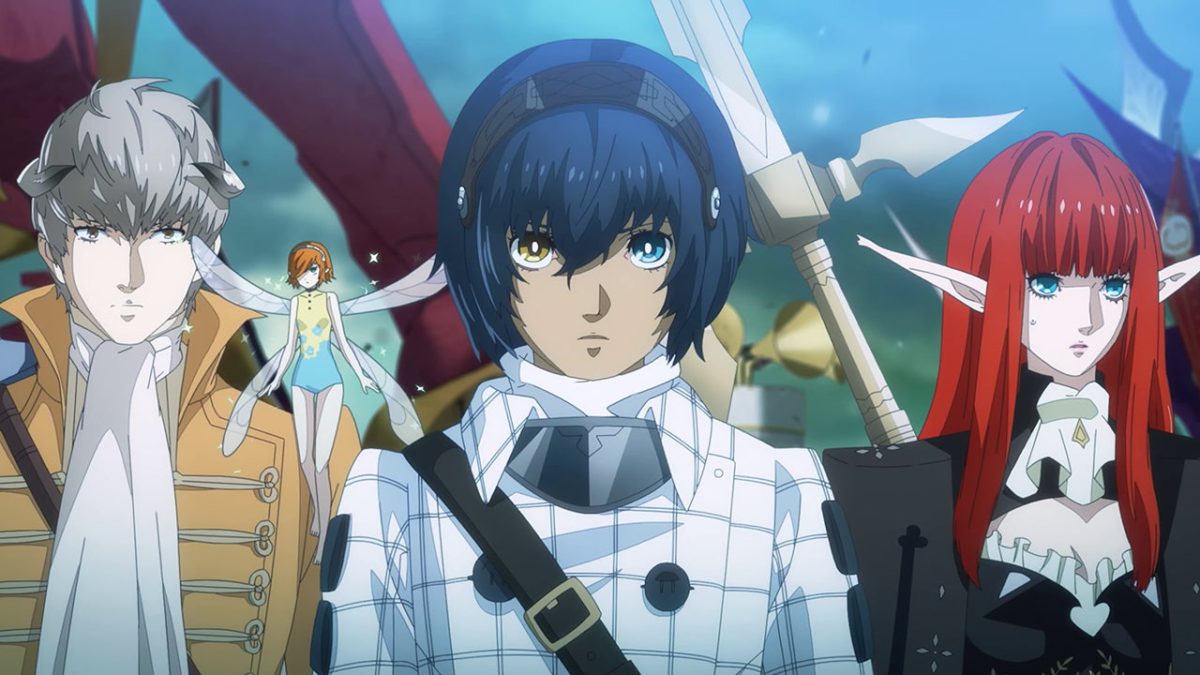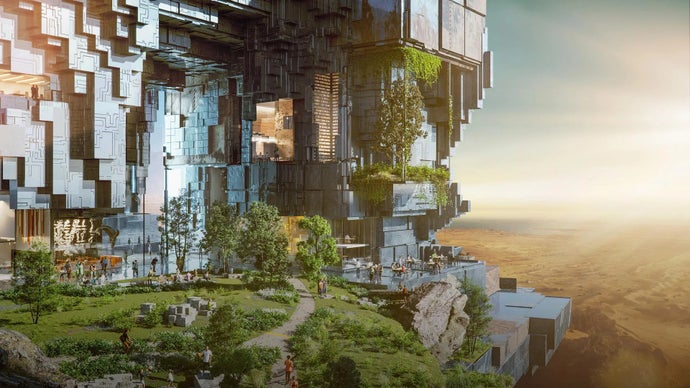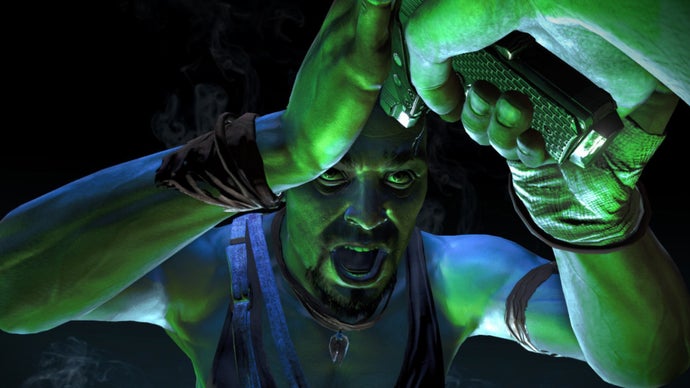Helldivers, high-ranking officials in the Ministry of Defense have accused you of being the best. And if you’re the best, then you’re going to need to be outfitted with the best, which is why the Ministry has fast-tracked the deployment of the Python Commandos Premium Warbond*–arriving to your Super Destroyers on December 2!
Weapons & Stratagems
Let’s talk firepower first. Python Commandos is loaded with three brand new stratagems and a new primary.
The Ministry of Defense received thousands of requests from squad commanders for a minigun and we’re excited to finally give our Helldivers access to the M-1000 Maxigun! Belt-fed with ultra-high ammo capacity, this one is sure to make those bugs bleed.
This Warbond also includes another addition to the line-up of faithful sidekicks for your Helldiver: the AX/FLAM-75 “Guard Dog” Hot Dog. This drone is equipped with a flamethrower to coat your foes in the fires of freedom before returning to your backpack to refuel.
But if you don’t want to burn the jungle down, consider doing your deforestation with the CQC-9 Defoliation Tool. If the machete doesn’t cut it–whether it’s a tree or an enemy–surely this will!
And finally, Python Commandos has a new and unique primary weapon: a combination assault rifle and grenade launcher called the AR/GL-21 One-Two. Heavy to wield, but the damage dealt is heavy too, making your primary slot more versatile than ever with two guns in one!
Armors & Capes
Python Commandos features two armor sets and, like Viper Commandos before it, they both let you get those guns out for some fresh air.
First up is the RS-20 Constrictor light armor set. It’s also the official uniform for the League of Patriotic Arm Wrestlers, so it’s guaranteed to give your squad bigger and more rippling biceps to intimidate the enemy. But if you’re carrying the team, maybe you need the RS-40 Best of Prey: a heavy armor set patterned after legendary Helldiver, Ronald Mambo and his famously powerful and burly physique.
Both of these armors are equipped with the Rock Solid passive, which makes your Helldiver more steadfast against staggering and ragdolling attacks.
You’ll also have two capes and coordinating player cards available: Foe Rent Asunder, which is pre-tattered to give a battle-worn appearance, and Mark of the Constrictor, for Helldivers who strangle out any anti-democratic behavior they encounter.
Patterns & Emotes
Along with all this, you’ll get access to the Front-Leaning Rest Position emote–now you can drop and give ‘em 20 anytime!
Python Commandos also includes the Chameleon Camo pattern for your FRV, Exosuit, Hellpod, and Shuttle.
The finishing touch is to get the whole team coordinated with the Python Commando player title and organize a swift strike on anything that stands between you and extraction.
The Python Commandos Premium Warbond is dropping in on December 2, divers. Get ready to deliver the venom of Liberty directly into the heart of evil!

*Requires base game, paid purchase of Super Credits, and game progression to unlock.

